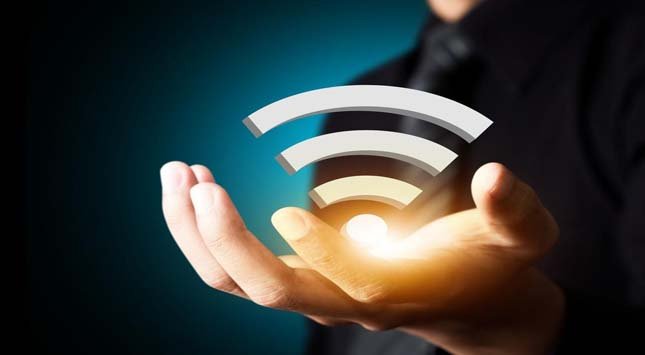Wi-Fi is among the world’s most essential information technologies.
Without it, the world wouldn’t be the hyper-connected place it is today, with laptops and IoT devices all chattering to each other over radio waves and giving us near-constant access to email, apps, social media, and more. You could say it’s the magic that powers the information age.
But of course, Wi-Fi is a technology that’s constantly being worked on and improved by some of the tech industry’s best engineers. And in 2019, a new version of Wi-Fi technology, known as Wi-Fi 6, is being rolled out. The latest version offers numerous upgrades from the current technology that will make Wi-Fi faster and more reliable than ever.
What’s the deal with Wi-Fi version upgrades? What upgrades can we expect from Wi-Fi 6? When will we see a full rollout of compatible devices? Find out as we investigate.
There are Different Versions of Wi-Fi.
Wi-Fi is a brand name referring to Wireless Local Area Network systems that can be used to connect devices (such as laptops, mobile phones, voice assistant speakers, and much more) to the Internet.
These devices’ technical specifications are based on a connectivity protocol called IEEE 802.11 that allows them to beam a signal through their electrical enclosures to connect via radio frequency waves. Engineering these devices in compliance with the same protocol ensures that they’re all able to communicate with standard wireless routers and with each other.
The Wi-Fi protocol has gone through several updates already, the last one happening in 2014 when Wi-Fi networks upgraded to the version known as 802.11ac. Each update has made Wi-Fi networks faster, more reliable, and more secure. Now, the Wi-Fi Alliance (the trade organization that regulates the Wi-Fi protocol) has announced the rollout of Wi-Fi 6 devices throughout 2019.
The Next Evolution: Wi-Fi 6
Wi-Fi 6 is the next big step forward in wireless connection technology. The Wi-Fi Alliance has promised big improvements, and it looks like they will deliver on that promise.
The most immediate change, of course, is the name. Previous versions of Wi-Fi used the highly technical names described above, but the new version will simply be called “Wi-Fi 6.” (The two most recent versions have been retroactively renamed Wi-Fi 4 and Wi-Fi 5.)
As far as technical upgrades go, there are several that we know about so far. The most important one is that it will significantly improve connection speed for networks with numerous devices on them.
The average number of Wi-Fi enabled devices in a household jumped from five in 2014 to nine in 2019 and shows no signs of slowing down. Wi-Fi 6 will include technology upgrades that enable routers to communicate significantly faster with many more devices.
The improvements don’t end there. According to early reports, Wi-Fi 6 will also offer:
- A theoretical upper-end speed of 9.6 gigabytes per second (as compared with 3.5 Gbps for Wi-Fi 5), although most networks will never achieve that speed. That bandwidth can go to one device or be distributed to multiple devices across a Wi-Fi network.
- Improved battery life for some Wi-Fi enabled devices. A feature called Target Wake Time decreases how often a device needs to contact the Wi-Fi, thus conserving its battery power. While this won’t affect devices like laptops and tablets that need constant Wi-Fi access for use, it should offer a significant improvement for IoT devices like smart temperature monitors that only need occasional access.
- Better security thanks to the implementation of WPA3, a technology that makes Wi-Fi passwords harder to crack. WPA3 was already rolled out in 2018, but it hasn’t yet been implemented everywhere. That will change with the rollout of Wi-Fi 6—a device must be WPA3-compliant to receive Wi-Fi 6 certification.
What’s the Status of Wi-Fi 6?
Some Wi-Fi 6-enabled devices are already available, but they’re still comparatively rare and expensive. However, some of 2019’s biggest tech launches will include Wi-Fi 6, including Samsung’s Galaxy S10 smartphone.
You May Like to Read: How to Recover Deleted Data From Samsung
The Wi-Fi Alliance has announced that they’ll launch the Wi-Fi 6 certification program in the third quarter of 2019. Once that program is implemented, you can expect to see a wave of new Wi-Fi 6-enabled devices.
The new naming conventions also include a rollout of a logo system that indicates which Wi-Fi generation the device supports. Look for the logo on the packaging, advertising, or the device’s electronics enclosure itself to ensure that you’re buying a compatible device.

Will I Need a New Router?
Your Wi-Fi 5 router won’t stop working when Wi-Fi 6 becomes widely available. You’ll still be able to connect, surf, game, and do all of your usual business. The only thing you won’t be able to do is set up a Wi-Fi 6 network.
Wi-Fi 6 networks will also be backward compatible with Wi-Fi 5-enabled devices, so you can still connect an older device to a Wi-Fi 6 network—you just won’t be able to take advantage of the enhanced features of the new standard.
If your home typically only has a few Web-enabled devices activated, an immediate upgrade for you might not be a priority.

However, if you’re considering an upgrade for a large office or you’re a competitive gamer who needs the fastest speeds available, you may want to go ahead and spring for one of the high-end Wi-Fi 6 routers that’s already available, such as TP-Link’s Archer AX11000.
The bottom line? Eventually, Wi-Fi 6 will be the standard for everyone. But until then, there’s no need to rush unless you need the absolute fastest speeds possible and/or you have a large network of Wi-Fi 6-compatible devices to connect.
Wi-Fi 6 looks like it could be a revolution in much more than name. With the increases in speed, connectivity, and convenience that the new version has, we’ll be watching excitedly for the technological innovations that will no doubt accompany it and looking forward to a world that’s more connected than ever before.






